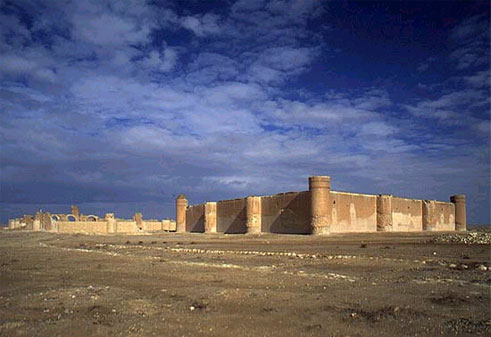A two thousands years old city and crossroad in the middle of the Syrian desert , Palmyra has been famous ever since a female monarch , Queen Zenobia, challenged the Roman emperor Aurlian and dominated lands East of the Mediterranean and Egypt for six years.
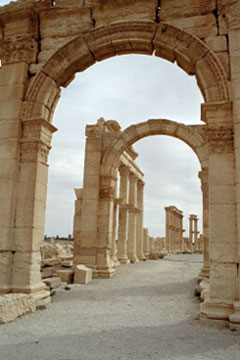
The ruins of Palmyra give an idea of the important role this city played at
its height; collecting taxes and defending the Eastern border of the Roman Empire from the Persians.
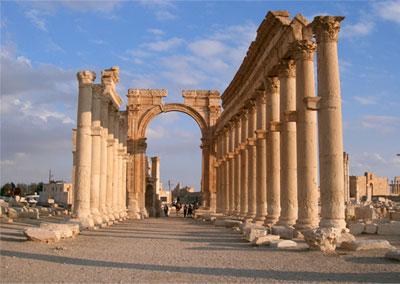
The colonnades, the temples devoted to Bel and Baalshamin, the funeral towers and the Necropolis valley are all definitely worth a visit.
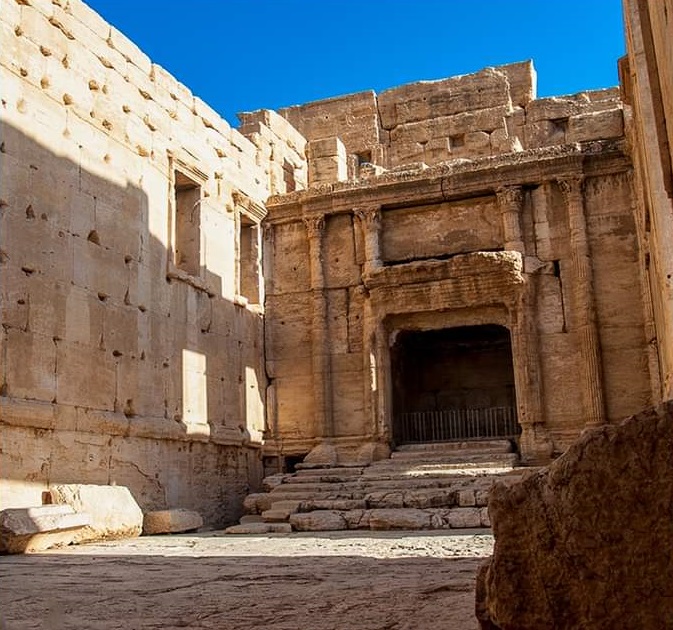
Palmyra stands aside on oasis of palm trees. It offers a dramatic spectacle you will never see elsewhere.
A dead piece of earth waiting to be submerged by the sands. And a medieval fortress on top of a hill , gloomy under an infinite blue sky. And at last , a skeleton of a city whitened by a ruthless sun, reminder of a great kingdom, that once dominated the Orient, and is now dead.
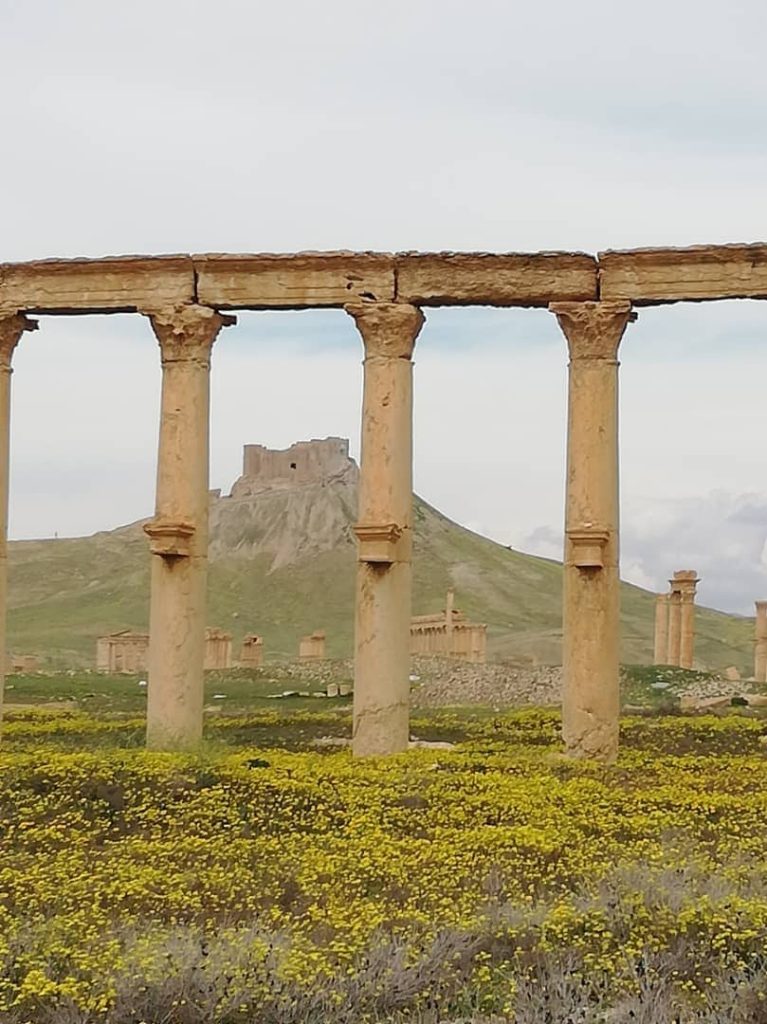
The sunset of Palmyra is almost unreal. The shadows of the ruins seem to revive the old city every evening.
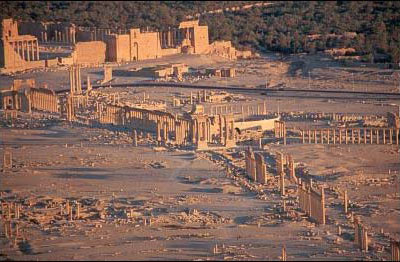
Qasr AL HEIR AL GHARBI : ( WEST )
45 km south-west of Tadmor (Palmyra), built by the Caliph Hisham ibn Abdul Malik in the 8th century, this palace is square and surrounded by a huge wall, at each corner of which there is a round tower. At each side of the main gate there are two half-rounded towers. It has a courtyard with columns with Corinthian crowns.
Qasr AL HEIR AL SHARQI : ( EAST )
110 km north-east of Palmyra , this palace was built by the Caliph Hisham in 628, it contains a palace-residence for the caliph and for the garrisons. There is a small mosque built in the style of the Omayyad Mosque in Damascus, there is a bath with hot, warm and cold running water. This is the oldest Omayyad bath. The palace is surrounded by a wide garden.
